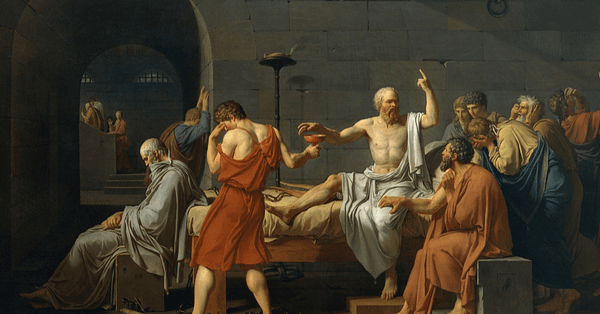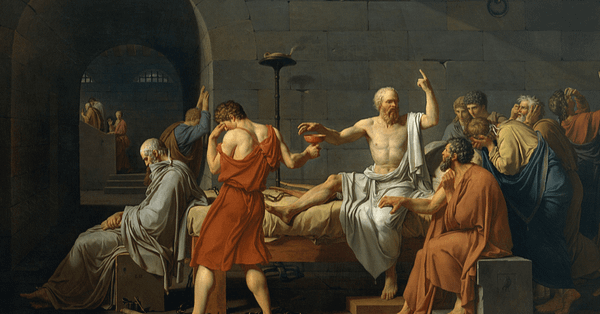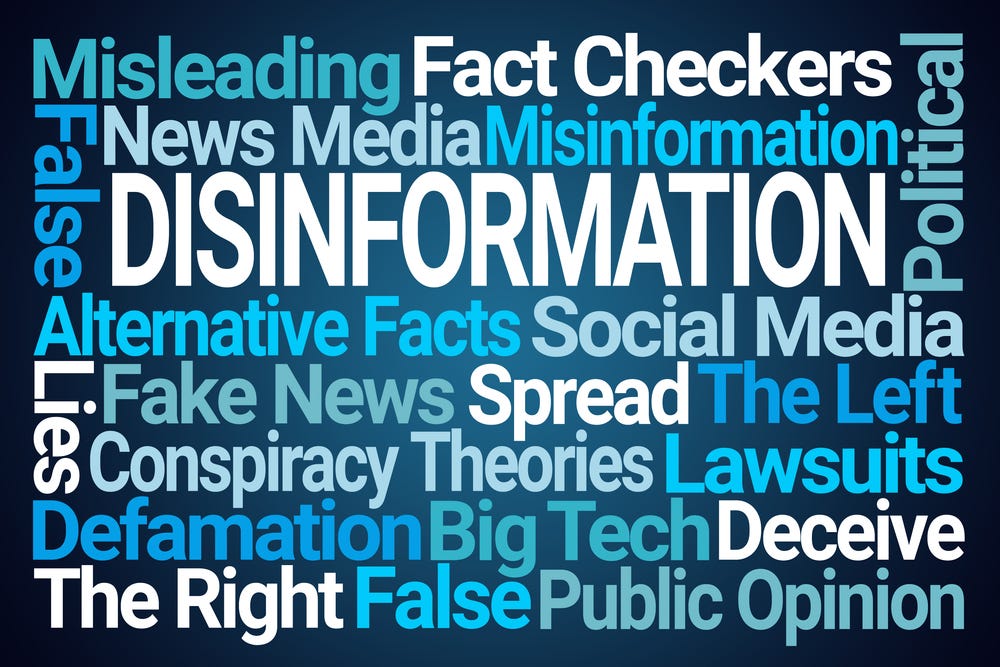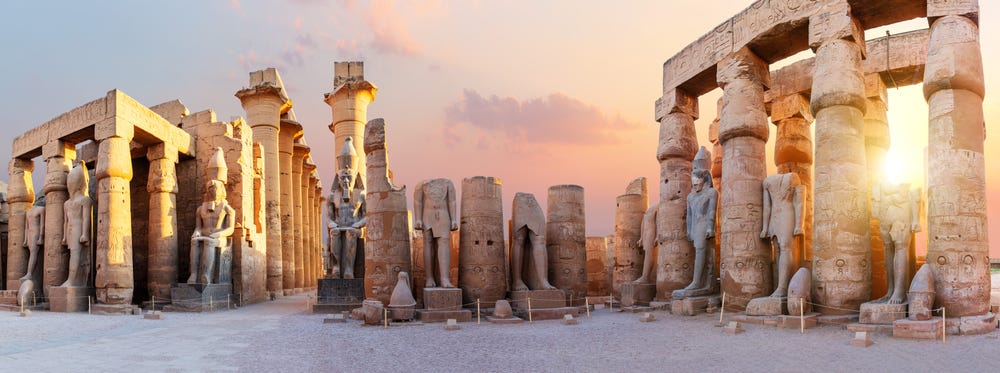E-Pluribus | April 21, 2022
The Disinformation Industrial Complex, should government define "medical misinformation," and what do statues tell us about our society?
A round up of the latest and best writing and musings on the rise of illiberalism in the public discourse:
Conor Friedersdorf: How ‘Big Disinformation’ Can Overcome Its Skeptics
It seems like there is a “Big” everything these days, and now here comes “Big Disinformation.” Conor Friedersdorf at The Atlantic examines the rapidly growing industry to ostensibly sniff out and expose the spread of false information in the media. Given that many who claim to be rooting out mis- and disinformation are often viewed by others as perpetrators of the same, Friedersdorf suggests some ground rules to help improve the credibility of participants in this effort.
Seeing so many powerful institutions elevate roughly the same narrative raises concerns that what skeptics call “Big Disinformation” or “the Disinformation Industrial Complex” is trendy groupthink that could itself distort national priorities or perceptions of reality––and perhaps lead to infringements on free speech and freedom of the press. Abroad, disinformation is regularly invoked as a pretext to suppress dissent. “The concept is undefined and open to abuse,” says Irene Khan, the United Nations’ special rapporteur on the promotion and protection of the right to freedom of opinion, “and because the size and nature of the problem is contested in the absence of sufficient data and research, state responses have often been problematic and heavy handed and had a detrimental impact on human rights.”
[ . . . ]
Then, reflecting an emerging consensus in the Democratic Party, he called for new laws to be imposed on digital-communications platforms such as Facebook, Twitter, and YouTube. Their designs “monetize anger, resentment, conflict, division,” he alleged––yet are opaque, embedding nontransparent editorial choices that sometimes spark violence. He wants us all to understand those choices better. What algorithms do these platforms use? Are botnets gaming them? How do they microtarget ads? “A democracy can rightly expect them to show us,” Obama insisted, noting, for example, our expectation that meat-processing plants open their doors to food-safety inspectors.
The most concerning downsides of anti-disinformation laws arguably disappear if they merely better inform us about the information flows we consume and refrain from infringing on the free exchange of ideas (including obvious misinformation, such as ivermectin being a near-perfect COVID-19 prophylactic). But if Big Disinformation is to benefit Western democracies and justify the resources being lavished on it, rather than merely avoiding the worst harms done in the name of fighting disinformation elsewhere in the world, it must clear additional hurdles, some of which may prove especially difficult in establishment institutions with ideological monocultures.
Read it all here.
Allysia Finley: California’s Medical ‘Misinformation’ Crusade Could Cost Lives
Speaking of arbiters of misinformation and truth, Allysia Finley at The Wall Street Journal writes of California’s attempt to rein in what it sees as false medical information. The problem is, what is viewed as “false” today is sometimes vindicated tomorrow, and if open and honest debate is quashed by draconian legislation, the long-term effects will be bad for the healthcare field and consequently the health of the public.
California’s bill would punish doctors for discussing disfavored ideas, making it almost certainly unconstitutional. Some liberal public-health experts say that makes the Constitution the problem. “Vaccine misinformation during the COVID-19 pandemic underscores how reverence for freedom of speech in the US intensifies our vulnerability to public health threats,” Stanford’s Michelle Mello recently wrote in the Journal of the American Medical Association.
Ms. Mello laments “the Supreme Court’s attachment to a particular conception of free speech rights,” which limits the government’s ability to impose speech restrictions. She suggests that state medical boards can “suspend the licenses of physicians whose statements constitute unprofessional conduct,” which could include “misinformation” as they define it.
[ . . . ]
The Federation of State Medical Boards last summer warned that physicians who spread misinformation about the Covid-19 vaccine risk “disciplinary action by state medical boards, including the suspension or revocation of their medical license.” So doctors in other states could also be disciplined for, say, suggesting children don’t need to be vaccinated.
The intolerance of different viewpoints that is infecting the medical profession may itself be a public-health threat. Emails obtained by the American Institute for Economic Research showed how the National Institutes of Health’s Francis Collins and Anthony Fauci tried to discredit the authors of the Great Barrington Declaration, which opposed the lockdown consensus. “This is a fringe component of epidemiology,” Dr. Collins told the Washington Post. “This is not mainstream science. It’s dangerous.”
Read it all.
Geoff Shullenberger: Twilight of the Idols
Although the statue toppling juggernaut has slowed down somewhat, it is reflective of a broader questioning of historical and cultural values. In a long and deep piece for City Journal, Geoff Shullenberger writes about the construction and destruction of statues and monuments, both real and metaphorical, and what that can tell us about our society’s changing values.
Most discussion of the recent furor against old statues pits historical preservation against the demands of the present. Serres’s account suggests that the iconoclasts actually get something right. Statues are not merely neutral records of the past: they are containers of violence and receptacles of death. In this sense, they should disturb us. Statues begins with a story from Flaubert’s Salammbô of a giant hollow metal statue of Baal into which sacrificial victims are placed, after which the effigy is placed on a fire and set alight. (The 1973 cult film The Wicker Man portrays a comparable ritual.) This horrifying image is representative because “every statue is . . . a black box whose secret walls envelop someone or something that they hide.” Last year’s protesters, in this sense, tore open such black boxes to reveal the bodies of victims.
[ . . . ]
Our species has replaced “hard sculpture” with “soft waves”: the coded information streams that dominate our media landscape. But the interplay of “hard” and “soft” media also goes back to our origins. It was figured initially, for Serres, in the opposition of statuary and music, one fixed on solid ground, the other floating across air. Serres’s project in Statues is to explore why statues remain a stumbling block and an essential landmark, even as their status is eroded by the proliferation of digital information.
The convulsions of 2020 culminated in destructive outbursts not only against statues but also against solid structures of all sorts, which were vandalized, smashed, and burned. At times, all this felt less like a repudiation of certain outmoded symbols than like a revolt against the solidity of the “hard” built environment itself on the part of people immersed in the “soft” media of the screen. Brick-and-mortar stores had been shuttered and overtaken by e-commerce as the virus chased us inside. The hard fixity of stone, brick, concrete, and bronze likewise yielded to viral outrage generated amid the flux of two-dimensional pixel space.
Read the whole thing.
Around Twitter
Via, Heterodox Academy, Professor Robert George on dialogue and speaking up fearlessly, but also with humility:






Some excerpts from a Yascha Mounk thread on the current election campaign in France, and what the right and left in this country might learn from France’s recent history:






And finally, Russell Brand on “free speech” versus “me speech”:







